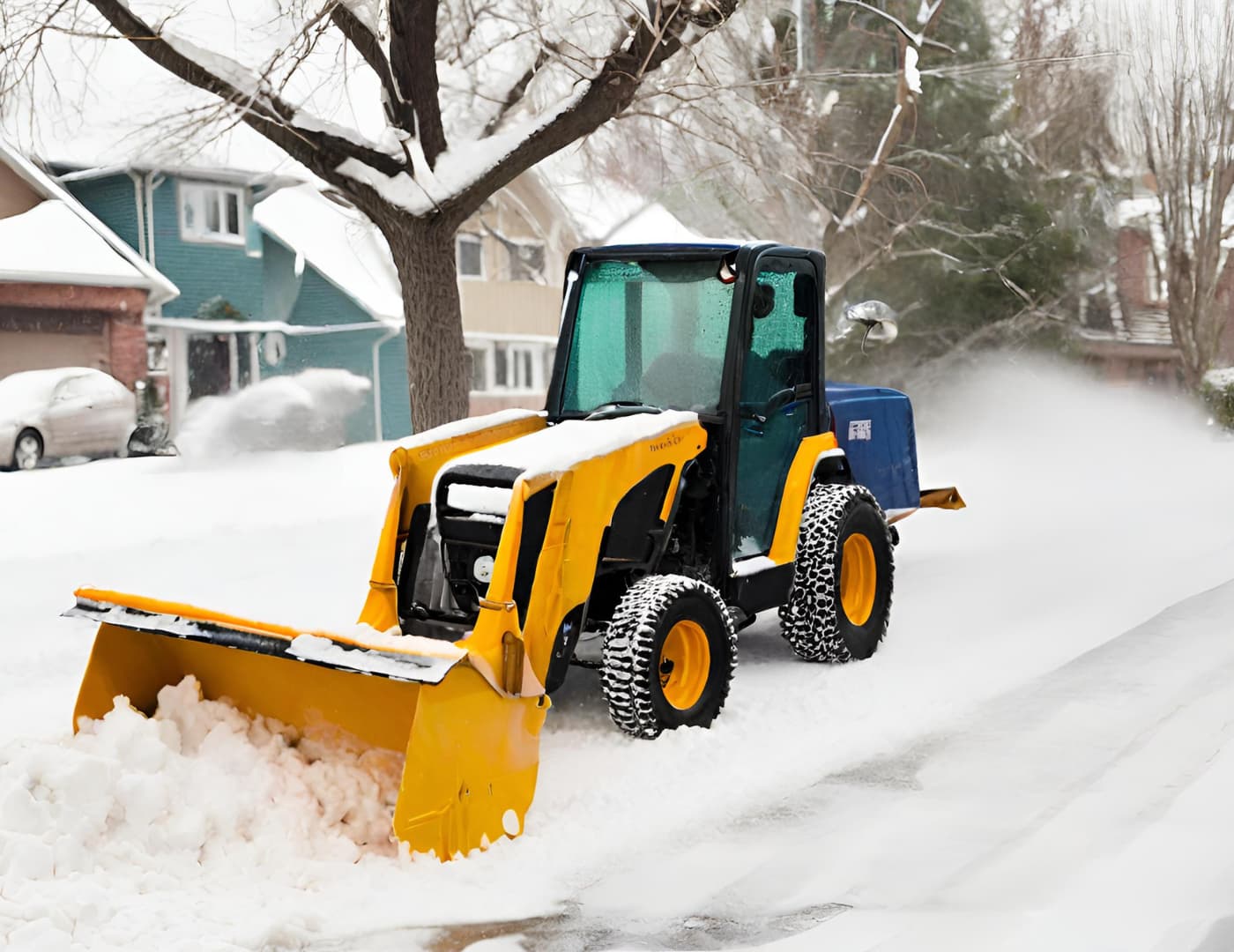When winter blankets our surroundings in a glistening layer of snow and ice, the need for effective snow removal service becomes apparent. However, understanding the distinction between snow removal and de-icer salt is crucial for addressing winter weather challenges efficiently. In this guide, we’ll unravel the differences between these two winter maintenance approaches and explore when and how to use each method to keep your pathways safe and accessible.
Snow Removal: Clearing the Path
As winter’s icy grip takes hold, the accumulation of snow on roads, walkways, and driveways poses a significant challenge. Snow removal is the proactive and physical process of clearing accumulated snow from these surfaces. This method primarily addresses the visible accumulation of snow, ensuring safe access and visibility during winter storms.
Snow removal techniques vary, ranging from manual shoveling to the use of specialized equipment like snow blowers and plows. Here’s a closer look at some of the key aspects of snow removal:
- Shoveling: Manual snow shoveling is a common method employed by homeowners to clear sidewalks, driveways, and paths. It requires physical effort but is a cost-effective solution for smaller areas.
- Plowing: Snow plowing involves the use of plow trucks equipped with blades to push or remove snow from roadways and large surfaces. This method is essential for keeping roads and highways passable during heavy snowfall.
- Snow Blowers: Snow blowers, also known as snow throwers, are motorized machines designed to displace snow from driveways and walkways. They offer a faster and more efficient alternative to shoveling.
De-Icing: Melting Ice and Preventing Formation
De-icing, on the other hand, focuses on addressing the formation of ice or melting existing ice on surfaces. It is a preventive and reactive approach to winter weather maintenance. De-icing agents are chemical substances applied to surfaces to prevent ice formation or accelerate the melting process.
Common de-icing agents include rock salt for sale (sodium chloride), calcium chloride, and magnesium chloride. These substances work by lowering the freezing point of water, thus preventing ice from bonding to the surface. Here are some key aspects of de-icing:
- Preventive Measures: De-icing is often employed as a preventive measure before snowfall or freezing rain to inhibit ice from forming on surfaces. This preemptive approach helps reduce the need for subsequent snow removal.
- Addressing Icy Patches: De-icing agents are applied to icy patches on roads, walkways, and parking lots to melt existing ice, making the surfaces safer for pedestrians and vehicles.
- Reducing Slip-and-Fall Risks: De-icing is instrumental in reducing slip-and-fall accidents, which can lead to injuries and liability concerns for property owners.
Key Differences Between Snow Removal and De-Icing
Understanding the primary objectives and methods of snow removal and de-icing is essential for choosing the right approach in different winter weather scenarios. Here are the key differences between these two methods:
- Objective: Snow removal primarily focuses on clearing visible snow accumulation, while de-icing aims to prevent ice formation or melt existing ice.
- Process: Snow removal is a physical process that involves clearing snow using equipment or manual labor, whereas de-icing involves applying chemical substances.
- Visibility vs. Safety: Snow removal enhances visibility and access by eliminating snow, while de-icing primarily ensures safety by preventing or melting ice.
When to Use Each Method
Choosing between snow removal and de-icing depends on various factors, including weather conditions, surface type, and the specific situation. Here’s when to use each method effectively:
- Snow Removal: Opt for snow removal when there is significant snow accumulation that hinders mobility and visibility. This method is suitable for clearing driveways, walkways, and large surfaces.
- De-Icing: Use de-icing as a preventive measure before snowfall or freezing rain to inhibit ice formation. Additionally, apply de-icing agents to address icy patches on surfaces and reduce slip-and-fall risks.
Complementary Practices: Using Both Methods
In many cases, snow removal and de-icing are complementary practices that work hand in hand to create safer winter environments. Snow removal clears accumulated snow, while de-icing agents help prevent refreezing. Using both methods can be particularly effective during prolonged winter storms and extreme cold snaps.
Environmental Considerations
While snow removal and de-icing are essential for winter safety, they can have environmental impacts. Excessive salt usage in de-icing can harm vegetation and water bodies. Therefore, it’s crucial to use de-icing agents responsibly and consider eco-friendly alternatives when available.
Conclusion
Mastering the differences between snow removal and de-icing is fundamental for effective winter weather management. Snow removal is the physical process of clearing snow, ensuring access and visibility, while de-icing focuses on preventing ice formation and enhancing safety.
By understanding when and how to use each method, property owners and municipalities can navigate winter weather challenges efficiently. Whether it’s clearing driveways or ensuring safe walkways, choosing the right approach is key to a safer and more accessible winter season. Stay informed, stay safe, and keep your paths clear this winter.
